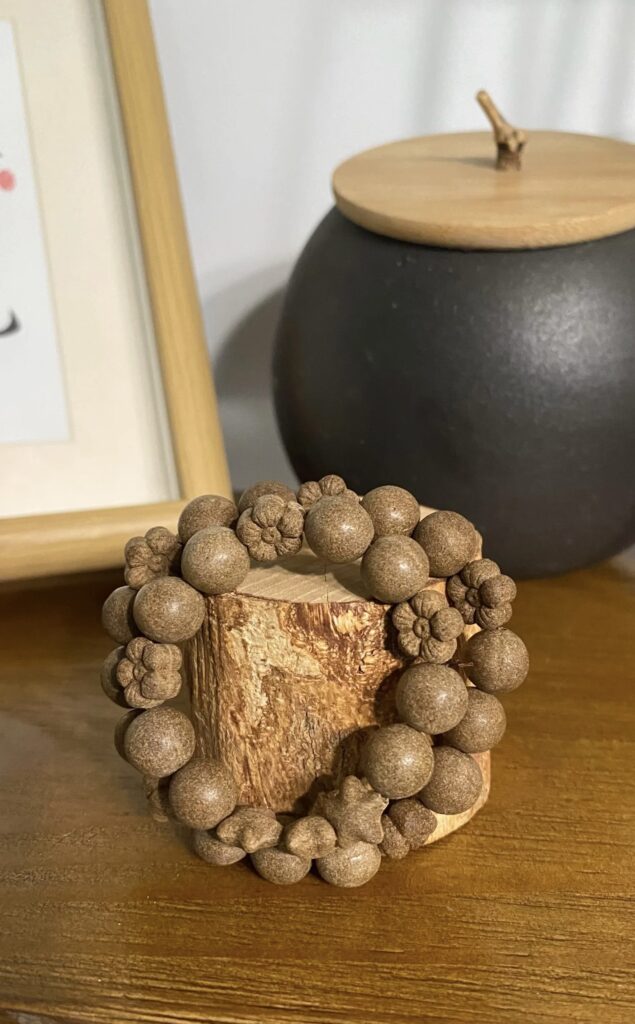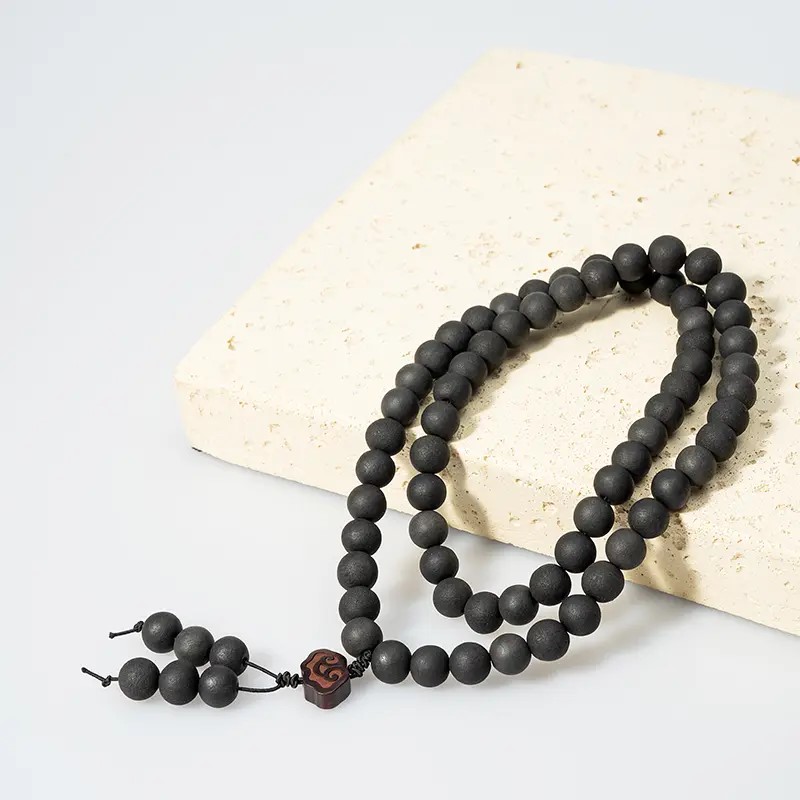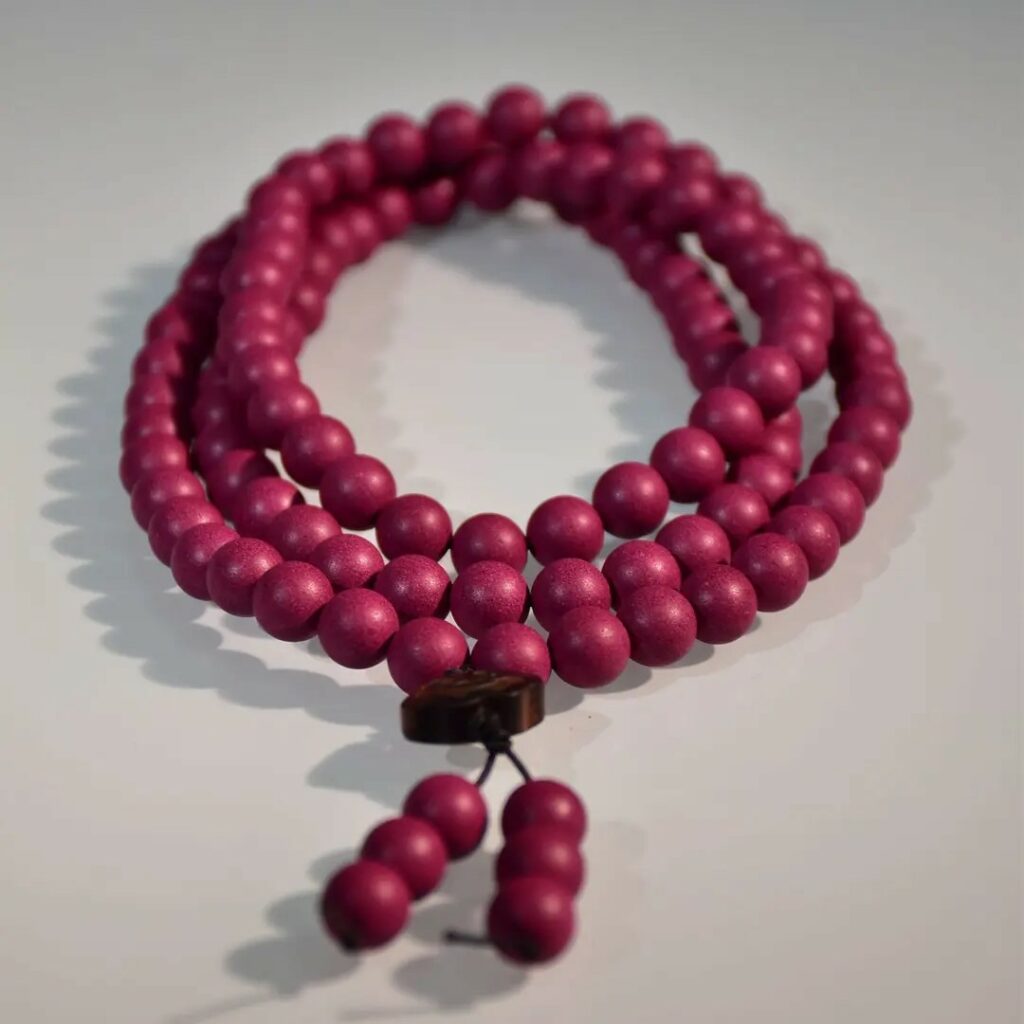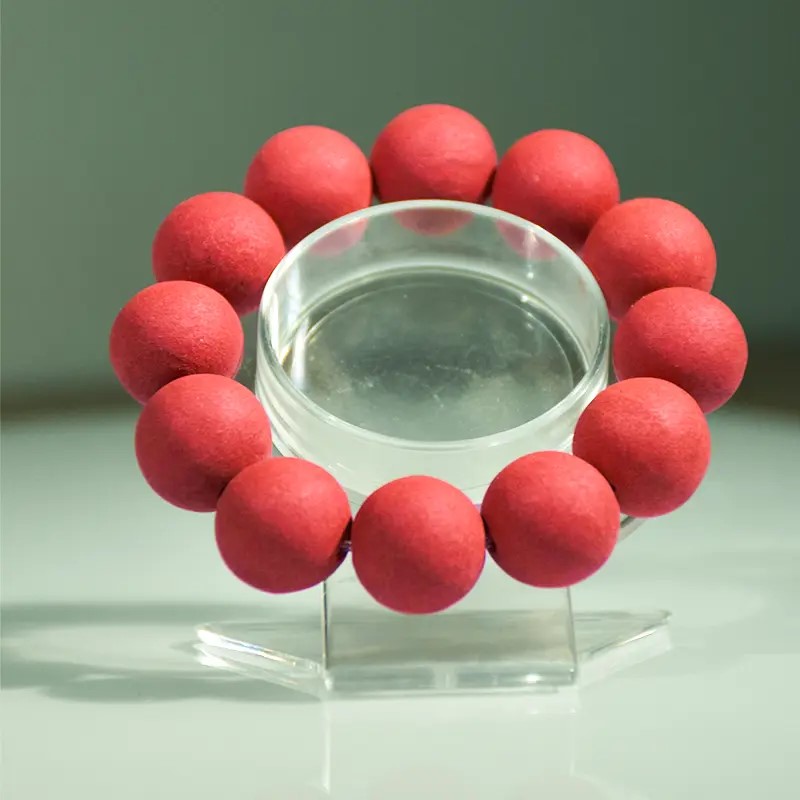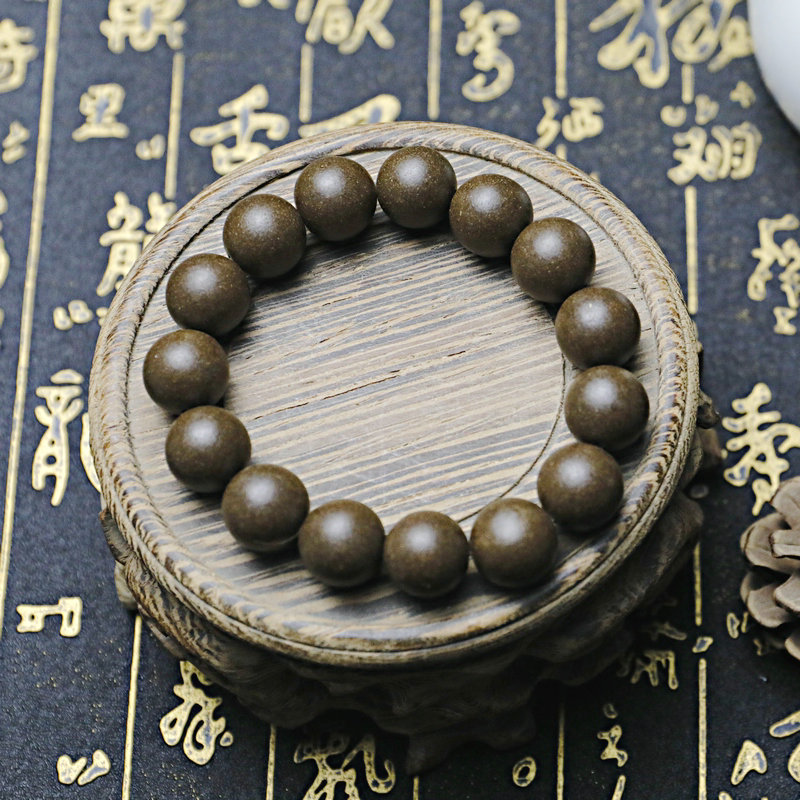Traditional Chinese Compound Incense
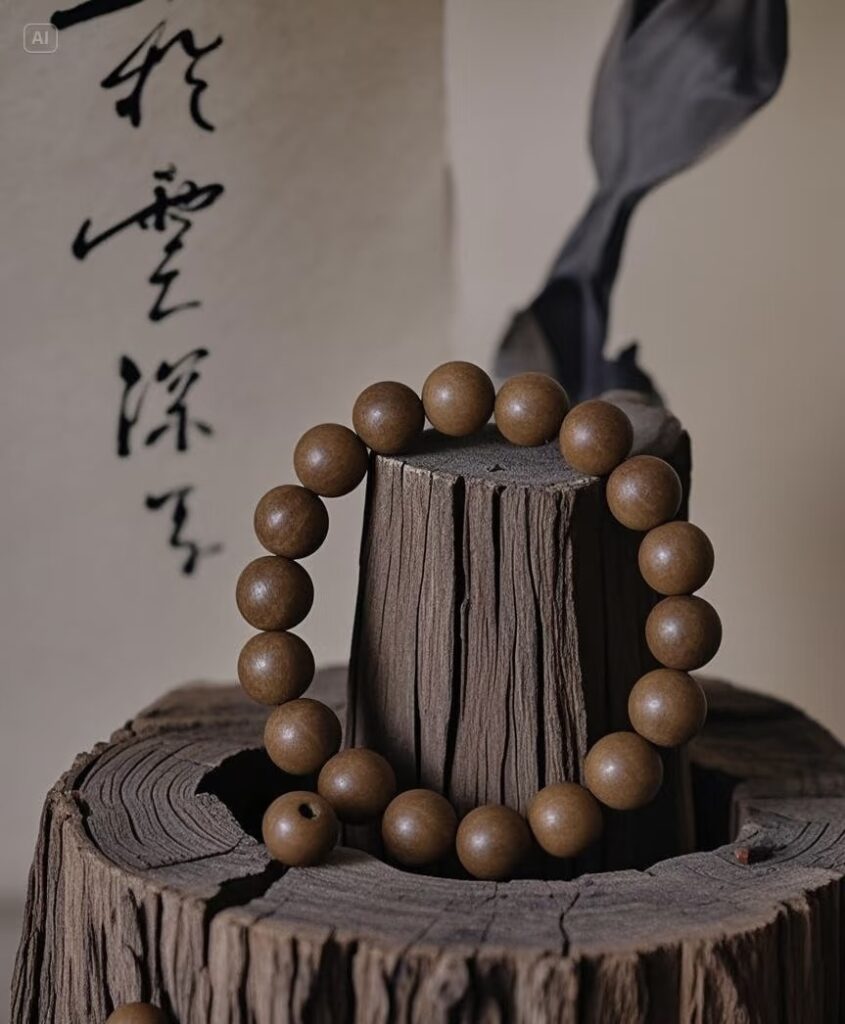
Traditional Chinese Compound Incense
The Delicate Art of Chinese aroma incense
Incense beads, or Chinese aroma incense beads , are far more than simple ornaments. These meticulously crafted spheres, born from the fusion of powdered precious woods, resins, herbs, and binding agents, represent a unique intersection of ancient Chinese fragrance culture, artistry, and contemplative practice. beads
Discovering your cherished beads – perhaps a treasured rosary, a collector’s Bodhi seed mala, or elegant pearl jewelry – soaked or soiled can induce panic. However, the ancient wisdom passed down through generations of bead artisans and collectors holds true: Don’t panic, don’t rush. Moisture itself, handled correctly, is rarely a death sentence for quality beads. The key lies in meticulous care during the recovery phase. This comprehensive guide explores the science and art of restoring wet or dirty beads to their former glory, focusing on the crucial principle of patient, natural drying as the foundation for restoring their prized patina ( bāo jiāng) and luster (shàng cí).
Understanding the Enemy: Why Moisture and Dirt Matter
Beads, especially organic materials (wood, seeds, bone, horn, pearl, coral, ivory alternatives) and some porous stones (turquoise, unglazed ceramics), are vulnerable:
- Structural Damage (Swelling/Cracking): Water absorption causes materials to swell. Rapid or uneven drying then leads to shrinkage stress, causing cracks, warping, or delamination (layers separating). This is particularly devastating for woods like sandalwood or rosewood, and seeds like Bodhi.
- Surface Degradation: Water can:
- Dull Finishes: Dissolve or disrupt natural oils, resins, or applied finishes (like lacquer on wood or the nacre layer of pearls).
- Cause Staining: Carry dissolved minerals or organic matter into porous surfaces, leaving watermarks or dark spots.
- Promote Mold/Mildew: Dampness trapped within or between beads creates an ideal environment for fungal growth, causing discoloration, odors, and material breakdown.
- Patina Disruption: The beautiful, hard-won patina – a smooth, deep luster formed through years of natural skin oil transfer and gentle friction during handling (pán) – is essentially a thin, hardened layer of organic material and oxidation. Water and harsh cleaning can strip or soften this delicate layer, making the bead look raw and dull again. Restoring it takes significant time and patience.
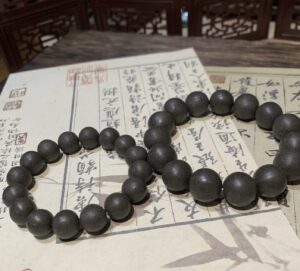
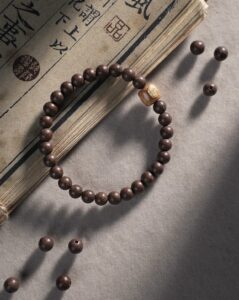
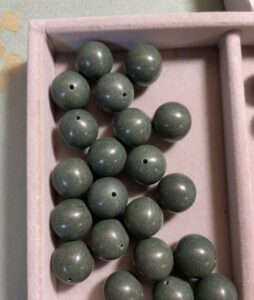
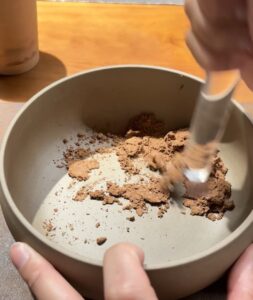
The Golden Rule: Patience is Paramount
The single most critical instruction when beads get wet is: DO NOTHING HASTILY. Resist the urge to:
- Blow-dry, Oven-dry, or Microwave: Intense heat causes rapid, uneven drying, maximizing shrinkage stress and virtually guaranteeing cracks. It can also melt adhesives or warp plastics.
- Rub Vigorously While Wet: This grinds dirt deeper into the surface or across the bead, potentially scratching it.
- Apply Harsh Chemicals Immediately: Solvents or strong cleaners can react unpredictably with wet materials or existing finishes.
- Panic and Overhandle: Constantly touching or moving wet beads increases the risk of dropping or introducing more contaminants.
Step-by-Step Recovery Protocol:
- Immediate Triage:
- Remove from Source: If actively wet (dunked in water, caught in rain), gently lift the beads out of the water. If it’s a strung piece, carefully lift the entire strand.
- Gentle Blotting (If Excessively Wet): Lay the beads flat on a super absorbent, lint-free cloth (microfiber or clean, white cotton towel). Gently press (do not rub) another cloth on top to soak up visible surface water. Pay special attention to knots or crevices where water pools. For intricate pieces, carefully pat dry. Time is critical here – don’t leave them soaking.
- Separation (For Strung Beads – Use Judgment):
- Proceed with Caution: Only attempt this if the string is synthetic (nylon, fluorocarbon) and very strong, and the beads are robust enough to handle restringing soon. Wet natural fibers (silk, cotton) stretch and weaken dramatically.
- Why Separate? Allows for thorough cleaning (if needed) and ensures all surfaces, including holes and the inner walls where beads touch, dry completely. Trapped moisture is the prime cause of mold and lingering odors.
- How: Carefully unknot or cut the cord near a knot. Lay beads individually on a drying surface. Label or photograph the order if pattern is crucial! If unsure or beads are fragile, skip this step and focus on thorough drying of the intact strand.
- Cleaning (Only if Dirty, Not Just Wet):
- Assess the Dirt: Is it mud, dust, oil, food, or unknown? Avoid cleaning unless necessary. Often, gentle drying is sufficient after accidental water exposure.
- Gentle Methods First:
- Dry Brushing: Use a very soft brush (makeup brush, soft artist’s brush) to dislodge loose dust or dirt from dry or slightly damp beads. Brush away from the bead hole.
- Damp Cloth Wipe: Only if essential. Dampen a corner of a lint-free microfiber cloth with distilled or filtered water (tap water minerals can stain). Wipe the bead surface gently, avoiding holes. Immediately dry with the dry part of the cloth. Never soak the bead!
- For Specific Stains (Use Sparingly & Test First!):
- Organic Stains (Food, Grass): Extremely diluted mild soap (like pH-neutral dish soap) on a damp cloth. Wipe, rinse cloth in clean water, wipe soap off, dry immediately. Avoid soap on porous stones/unfinished wood.
- Oil/Grease: Minimal rubbing alcohol (isopropyl 70%+) on a cotton swab, touch only the stained spot. Blot immediately with dry cloth. Test on inconspicuous area first! Risky for pearls, coral, some plastics.
- Mold/Mildew: Distilled white vinegar (diluted 50/50 with water) on a cotton swab. Dab affected area, then wipe immediately with cloth dampened with distilled water, then dry thoroughly. Ventilate well. Monitor closely.
- NEVER USE: Harsh detergents, bleach, ammonia, abrasive cleaners, ultrasonic cleaners (unless explicitly safe for that specific bead type), or excessive water immersion.
- The Crucial Drying Phase:
- Location, Location, Location: Choose a dry, cool, dark, and well-ventilated area. Avoid direct sunlight (causes fading and uneven heating), radiators, heating vents, stoves, or humid rooms like bathrooms.
- Surface: Place beads on a breathable, absorbent surface. Ideal choices:
- Unbleached Parchment Paper: Non-stick, absorbent, breathable.
- Clean, Dry Rice (Short-Term): Traditional method; rice draws moisture. Use uncooked, clean white rice in a shallow bowl. Place beads on top, not buried. Change rice daily. Monitor beads closely for rice dust residue. Best for initial moisture pull over 24-48 hours.
- Silica Gel Packets: Excellent desiccant. Place beads in a breathable container (like a cardboard box with air holes) surrounded by numerous new silica gel packets. Seal loosely. More effective than rice for thorough drying. Recharge or replace packets as needed.
- Soft, Absorbent Cotton Cloth: Lay beads flat, ensuring they don’t touch each other. Flip beads occasionally.
- Positioning: Lay beads flat, ensuring no beads touch each other. This maximizes airflow to all surfaces. For round beads, gently roll them a quarter turn every few hours during the first day to prevent flat spots from forming against the drying surface and ensure even drying.
- Duration:This is NOT quick. Patience is non-negotiable.
- Allow at least 72 hours (3 full days) for small, non-porous beads (glass, plastic, well-sealed stone).
- Allow 1-2 weeks or significantly longer for porous materials (wood, seeds, bone, turquoise, pearls, unglazed ceramics), thick beads, or beads where moisture could be trapped within the hole or between layers. Rushing guarantees failure.
- Testing Dryness: After the minimum time, carefully feel the bead, especially inside the hole (use a dry wooden toothpick tip gently – don’t force it). It should feel completely room-temperature dry, not cool or damp. Weighing the bead periodically (if you know its dry weight) can also indicate moisture loss. When in doubt, wait longer.
- The Path to Restoration: Rebuilding Patina (Pan)
- Confirm Absolute Dryness: This is critical. Handling beads with residual internal moisture traps oils and sweat, creating a sticky mess and potentially promoting mold.
- Restringing: If beads were separated, restring them carefully using appropriate, strong cord. Ensure knots are secure.
- Gentle Handling (“Pan”): The restoration of the patina and ultimate luster begins now, through the traditional practice of “PAN”(pán).
- Clean Hands: Wash hands thoroughly with mild soap and water, rinse well, and dry completely before handling. Oils and dirt from hands are the building blocks of patina, but clean oils.
- Gentle Rotation: Hold the beads or strand and gently rotate/rub them between your fingers and palms. Apply very light pressure. The goal is even, gentle friction and the transfer of your skin’s natural oils.
- Short, Frequent Sessions: Start with just 5-10 minutes per session, 1-2 times a day. Gradually increase as the bead surface responds. Avoid marathon sessions that heat the beads excessively or make your hands sweaty.
- Consistency is Key: Regular, gentle handling over weeks and months is what rebuilds the patina. Don’t expect overnight results.
- Rest Periods: Just like the drying phase, beads benefit from rest. Handle them, then let them sit undisturbed in a clean environment for a day or two. This allows the oils to oxidize and harden slightly.
- The Transformation: Over time, you will observe:
- Loss of Dryness/Rawness: The surface will feel less harsh.
- Increased Smoothness: Gentle friction polishes the surface.
- Deepening Luster: The patina begins to form, creating a soft glow from within, not just surface shine.
- Uniformity: Color variations from water stains or cleaning often lessen as the patina develops evenly.
- (Shàng Cí): The ultimate goal – a deep, mirror-like, hardened luster resembling porcelain, achieved through years of dedicated, mindful handling.
Prevention: The Ultimate Strategy
- Mindful Wear: Be aware of activities. Remove valuable or porous beads before washing hands, showering, swimming, cooking (grease/steam), gardening, or exercising.
- Proper Storage: Store beads in breathable pouches (linen, cotton) within a closed box or drawer. Include silica gel packets to control humidity, especially in damp climates. Avoid plastic bags long-term (traps moisture).
- Regular, Gentle Care: Light dusting with a soft brush. Occasional gentle “panning” session to maintain oils.
Embracing the Journey
Accidents happen. A spilled drink, an unexpected downpour, or simple clumsiness can compromise your beads. However, as the ancient wisdom wisely advises, Don’t panic when they get wet; drying properly won’t affect their use or the return of their luster. The path to recovery hinges entirely on respecting the materials and the processes involved. Prioritize safe, natural drying above all else. Avoid the siren call of quick fixes like heat or harsh chemicals. Cleaning should be minimal and cautious. The restoration of the sacred patina and luster is not a repair job, but a slow, mindful recommitment to the relationship between the object and its handler through the practice of “PAN”.
By understanding the vulnerabilities of your beads, acting with deliberate calmness when accidents occur, and committing to the patient, natural processes of drying and repatination, you can not only salvage your precious beads but often deepen your connection to them through the restorative journey. The renewed luster will be a testament to your care and patience.
